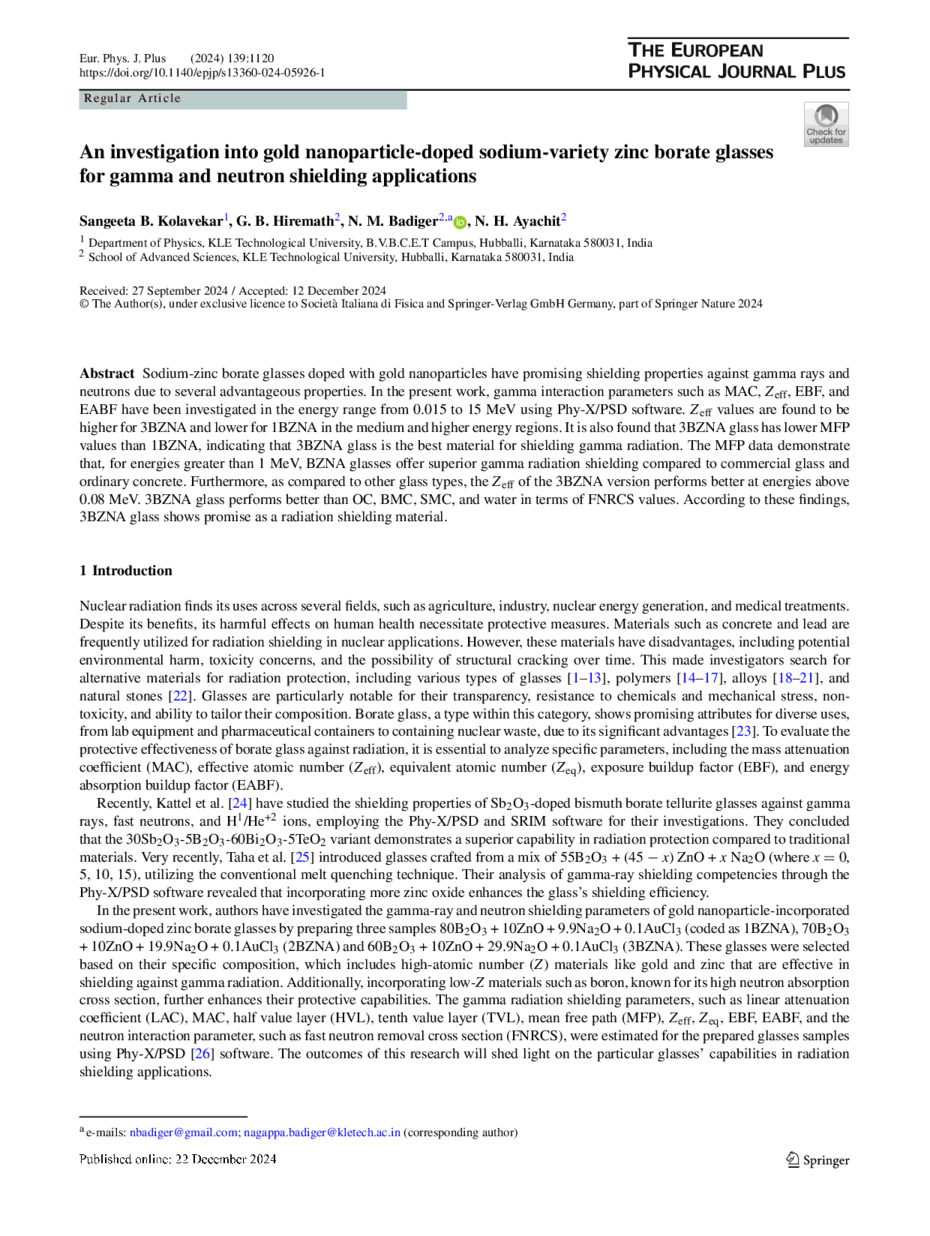https://doi.org/10.1140/epjp/s13360-024-05926-1
Regular Article
An investigation into gold nanoparticle-doped sodium-variety zinc borate glasses for gamma and neutron shielding applications
1
Department of Physics, KLE Technological University, B.V.B.C.E.T Campus, 580031, Hubballi, Karnataka, India
2
School of Advanced Sciences, KLE Technological University, 580031, Hubballi, Karnataka, India
a nbadiger@gmail.com, nagappa.badiger@kletech.ac.in
Received:
27
September
2024
Accepted:
12
December
2024
Published online:
22
December
2024
Sodium-zinc borate glasses doped with gold nanoparticles have promising shielding properties against gamma rays and neutrons due to several advantageous properties. In the present work, gamma interaction parameters such as MAC, Zeff, EBF, and EABF have been investigated in the energy range from 0.015 to 15 MeV using Phy-X/PSD software. Zeff values are found to be higher for 3BZNA and lower for 1BZNA in the medium and higher energy regions. It is also found that 3BZNA glass has lower MFP values than 1BZNA, indicating that 3BZNA glass is the best material for shielding gamma radiation. The MFP data demonstrate that, for energies greater than 1 MeV, BZNA glasses offer superior gamma radiation shielding compared to commercial glass and ordinary concrete. Furthermore, as compared to other glass types, the Zeff of the 3BZNA version performs better at energies above 0.08 MeV. 3BZNA glass performs better than OC, BMC, SMC, and water in terms of FNRCS values. According to these findings, 3BZNA glass shows promise as a radiation shielding material.
Copyright comment Springer Nature or its licensor (e.g. a society or other partner) holds exclusive rights to this article under a publishing agreement with the author(s) or other rightsholder(s); author self-archiving of the accepted manuscript version of this article is solely governed by the terms of such publishing agreement and applicable law.
© The Author(s), under exclusive licence to Società Italiana di Fisica and Springer-Verlag GmbH Germany, part of Springer Nature 2024
Springer Nature or its licensor (e.g. a society or other partner) holds exclusive rights to this article under a publishing agreement with the author(s) or other rightsholder(s); author self-archiving of the accepted manuscript version of this article is solely governed by the terms of such publishing agreement and applicable law.





